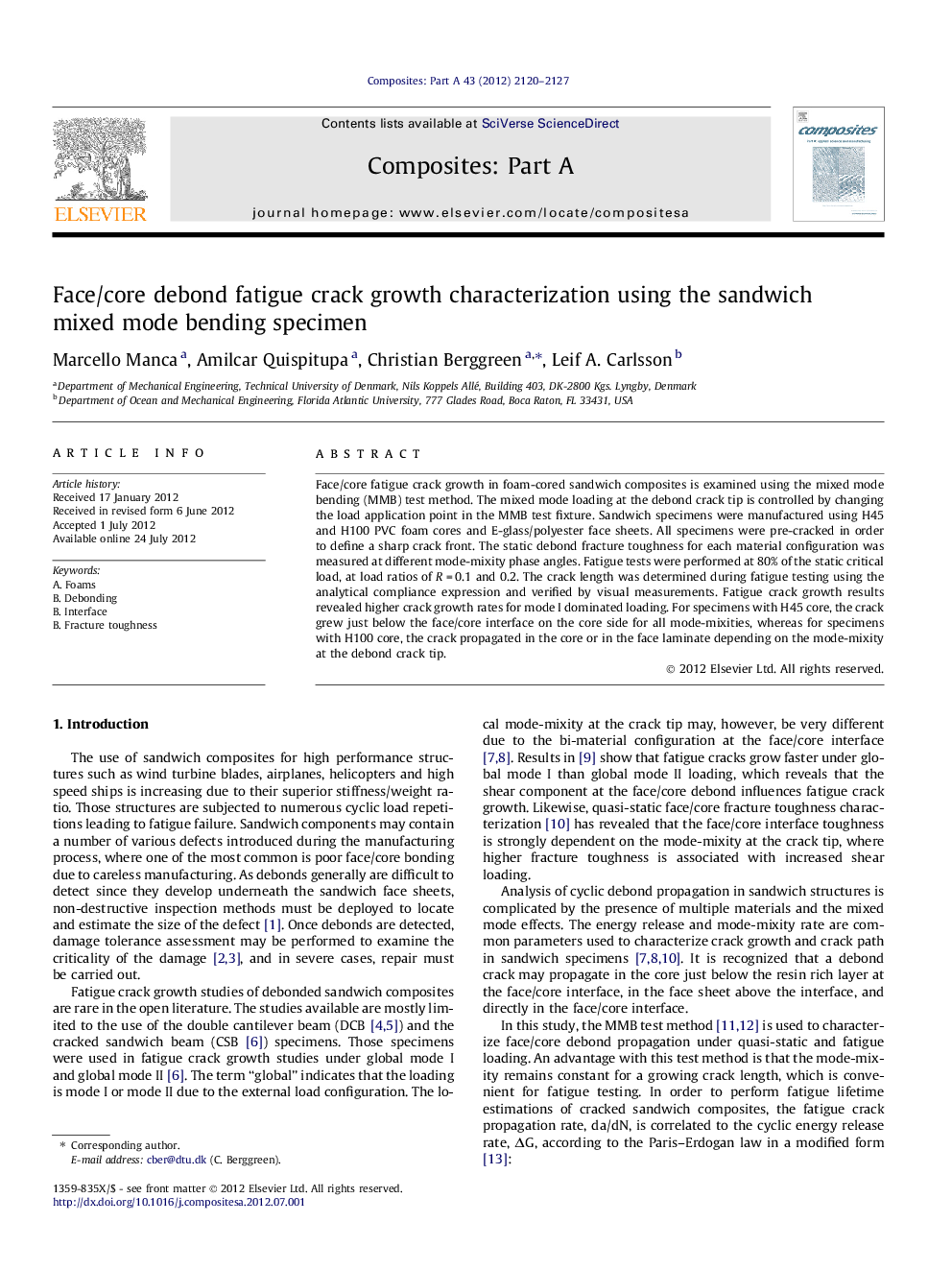| Article ID | Journal | Published Year | Pages | File Type |
|---|---|---|---|---|
| 10627637 | Composites Part A: Applied Science and Manufacturing | 2012 | 8 Pages |
Abstract
Face/core fatigue crack growth in foam-cored sandwich composites is examined using the mixed mode bending (MMB) test method. The mixed mode loading at the debond crack tip is controlled by changing the load application point in the MMB test fixture. Sandwich specimens were manufactured using H45 and H100 PVC foam cores and E-glass/polyester face sheets. All specimens were pre-cracked in order to define a sharp crack front. The static debond fracture toughness for each material configuration was measured at different mode-mixity phase angles. Fatigue tests were performed at 80% of the static critical load, at load ratios of RÂ =Â 0.1 and 0.2. The crack length was determined during fatigue testing using the analytical compliance expression and verified by visual measurements. Fatigue crack growth results revealed higher crack growth rates for mode I dominated loading. For specimens with H45 core, the crack grew just below the face/core interface on the core side for all mode-mixities, whereas for specimens with H100 core, the crack propagated in the core or in the face laminate depending on the mode-mixity at the debond crack tip.
Related Topics
Physical Sciences and Engineering
Materials Science
Ceramics and Composites
Authors
Marcello Manca, Amilcar Quispitupa, Christian Berggreen, Leif A. Carlsson,
